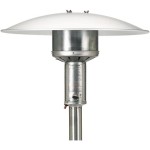How To Remove Old Paint From Concrete Patio With Vinegar
Removing old paint from a concrete patio can be a necessary, albeit challenging, task to revitalize the outdoor space. While various methods exist, using vinegar offers a gentler, more environmentally friendly alternative to harsh chemical strippers. Vinegar, a readily available household item, possesses acidic properties that can effectively soften and loosen paint, making it easier to remove. This article provides a comprehensive guide on how to safely and effectively remove old paint from a concrete patio using vinegar.
Before embarking on the paint removal process, it is crucial to understand the type of paint involved. Water-based latex paints generally respond well to vinegar treatment, while oil-based paints may require more extensive soaking and potentially supplementary methods. Identifying the paint type will allow for a more tailored and efficient approach. Additionally, the age and thickness of the paint layer significantly impact the effectiveness of vinegar. Multiple layers of old, weathered paint may necessitate repeated applications and longer soaking times.
Safety precautions must be prioritized throughout the entire process. Concrete, while durable, can still be affected by prolonged exposure to strong acids. The acid in vinegar is relatively weak, but it's still beneficial to protect yourself. Always wear appropriate personal protective equipment (PPE), including gloves, eye protection, and a mask, especially when dealing with potentially lead-based paints. Proper ventilation is also essential, particularly when working in enclosed or partially enclosed patio areas. Before commencing the vinegar treatment, it is advisable to test a small, inconspicuous area of the patio to assess the concrete's reaction to the vinegar and to gauge the effectiveness of the method on the specific type of paint.
Preparing the Concrete Patio for Vinegar Treatment
Proper preparation of the concrete patio is paramount for maximizing the effectiveness of the vinegar treatment and minimizing potential damage. The initial step involves thoroughly cleaning the surface to remove any loose debris, dirt, grease, or other contaminants. This can be achieved using a stiff-bristled brush and a solution of mild detergent and water. Scrub the entire area vigorously, paying particular attention to areas with heavy soiling. Rinse thoroughly with clean water, ensuring all traces of detergent are removed. Allow the patio to dry completely before proceeding to the next step.
Once the patio is clean and dry, assess the condition of the paint. If the paint is peeling or flaking extensively, use a scraper or putty knife to remove any loose fragments. This will allow the vinegar to penetrate more effectively and target the remaining paint layers. Be cautious not to gouge or damage the concrete surface during this process. Feather the edges of the remaining paint to promote even penetration of the vinegar. For areas with particularly thick or stubborn paint, consider scoring the surface with a utility knife or wire brush to create small grooves that will facilitate vinegar absorption.
Protecting surrounding areas is crucial to prevent accidental damage or discoloration. Cover any nearby plants, landscaping, or furniture with plastic sheeting or drop cloths. Secure the coverings with tape to prevent them from shifting during the treatment process. If there are any metal fixtures or trim adjacent to the painted area, consider applying a protective coating of petroleum jelly or masking tape to shield them from potential corrosion or staining by the vinegar. Pay close attention to drainage pathways and consider diverting runoff to prevent vinegar from entering sensitive areas.
Applying Vinegar to Soften and Loosen the Paint
The application of vinegar requires careful consideration to ensure optimal results. While undiluted white vinegar is generally recommended for paint removal, the concentration can be adjusted depending on the paint's condition and the concrete's sensitivity. For delicate concrete or thinner paint layers, a mixture of equal parts vinegar and water may be sufficient. For thicker, more stubborn paint, undiluted vinegar will likely be more effective. It is always prudent to start with a diluted solution and gradually increase the concentration if necessary.
There are several methods for applying vinegar to the painted surface. One common approach involves using a spray bottle to evenly saturate the entire area. This method is particularly effective for large surfaces or horizontal areas. Alternatively, a paintbrush or roller can be used to apply a thicker layer of vinegar to specific areas or for targeted treatment of stubborn spots. For vertical surfaces, a gel-based vinegar solution may be preferred to prevent excessive dripping and ensure prolonged contact time. To create a gel, mix vinegar with a thickening agent such as cornstarch or cellulose ether, following the manufacturer's instructions.
After applying the vinegar, allow it to soak for a sufficient period to soften the paint. The soaking time will vary depending on the paint type, thickness, and age, as well as the ambient temperature. Generally, a soaking time of 30 minutes to several hours is recommended. Periodically check the paint's condition to assess its softness. The paint should begin to bubble, blister, or soften around the edges. If the paint remains hard and resistant after several hours, consider reapplying the vinegar and allowing it to soak for a longer duration. Covering the treated area with plastic sheeting can help to retain moisture and enhance the effectiveness of the vinegar.
Removing the Softened Paint and Cleaning the Surface
Once the paint has softened sufficiently, the removal process can begin. Use a scraper, putty knife, or wire brush to gently remove the loosened paint. Start by scraping along the edges of the paint layers and gradually work your way inwards. Apply consistent pressure while avoiding excessive force, which could damage the concrete surface. For larger areas, a power scraper or pressure washer with a low-pressure nozzle may be used to expedite the removal process. However, exercise caution to prevent concrete erosion or etching. Always test these tools on a small, inconspicuous area before using them on the entire patio.
After removing the majority of the softened paint, there may be residual paint fragments or staining remaining on the concrete surface. Address these remaining imperfections by scrubbing the area with a stiff-bristled brush and a solution of vinegar and baking soda. The abrasive action of the baking soda will help to lift any remaining paint particles, while the vinegar will neutralize any residual acidity. Rinse thoroughly with clean water to remove all traces of vinegar and baking soda. If staining persists, consider using a commercial concrete cleaner or stain remover specifically designed for removing paint residue.
Following the paint removal and cleaning process, it is essential to allow the concrete patio to dry completely. This can take several hours or even days, depending on the ambient temperature and humidity levels. Once the patio is dry, inspect the surface for any remaining imperfections or damage. Fill any cracks or chips with a concrete patching compound and allow it to cure according to the manufacturer's instructions. Finally, consider applying a concrete sealer to protect the patio from future staining and weathering. The sealer will also enhance the patio's appearance and prolong its lifespan. When selecting a sealer, choose one that is specifically designed for outdoor concrete surfaces and is compatible with the type of concrete used in your patio.

How To Remove Old Paint From Concrete Without Chemicals

How To Clean Concrete The Easy Way Porches Patios Driveways More Run Radiance

How To Get Paint Off Concrete 3 Ways Remove From Paving

Best Way To Clean A Concrete Patio Chalking Up Success

5 Ways To Clean A Concrete Patio Wikihow

6 Easy Ways To Clean Your Concrete Patio For Spring

How To Remove Old Paint From Concrete Without Chemicals

How To Clean Concrete The Easy Way Porches Patios Driveways More Run Radiance

How To Clean Patio Slabs Make Your Sparkle For Spring With Three Household Items Express Co

How To Clean A Concrete Patio Remove Tough Stains
Related Posts








